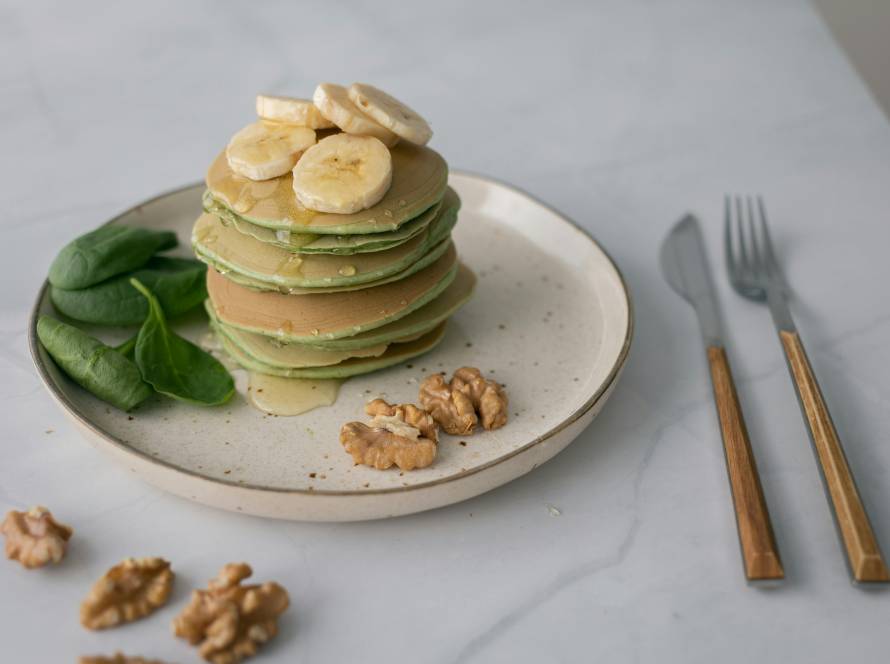When we think of gluten-free dining, our minds often jump to modified versions of Western staples like bread and pasta. However, the world of gluten-free cuisine is vast, varied, and incredibly rich in flavors and traditions. Many cultures around the globe have been preparing naturally gluten-free dishes for centuries, long before the term “gluten-free” entered our culinary lexicon. In this gastronomic journey, we’ll explore the diverse and delicious world of naturally gluten-free cuisines from different corners of the earth, offering inspiration for those living gluten-free and anyone looking to expand their culinary horizons.
What Is Gluten-Free Cuisine? A Beginner’s Guide
Gluten-free cuisine refers to food that is completely free from gluten, a protein found in wheat, barley, and rye. This style of eating is essential for individuals with celiac disease, gluten intolerance, or those simply seeking a healthier lifestyle. With the rising popularity of clean and mindful eating, gluten-free options have become more accessible, flavorful, and diverse than ever. Whether you’re new to this way of eating or exploring it out of curiosity, understanding the basics is the first step.
Here’s what you need to know as a beginner:
- Gluten is commonly found in bread, pasta, and baked goods.
- Naturally gluten-free foods include fruits, vegetables, meat, rice, and legumes.
- Cross-contamination is a risk—use separate utensils and surfaces.
- Read food labels carefully; gluten can hide in sauces, dressings, and seasonings.
- Certified gluten-free products are safer for sensitive individuals.
- You don’t need to give up flavor—many gluten-free recipes are delicious and satisfying.
- A balanced gluten-free diet should still include fiber, protein, and essential nutrients.
Top Benefits of Going Gluten-Free Food
Adopting a gluten-free diet can offer a range of health benefits, especially for individuals with celiac disease, gluten sensitivity, or autoimmune disorders. However, even those without diagnosed conditions may find improvements in their overall well-being when eliminating gluten from their meals. The key is to follow a balanced and nutritious approach that avoids processed gluten-free junk food and focuses on whole, natural ingredients.
Here are the top benefits of going gluten-free Food:
- Reduces digestive issues like bloating, gas, and discomfort.
- Improves energy levels and reduces chronic fatigue.
- Helps manage symptoms of celiac disease and gluten intolerance.
- Promotes healthier skin and fewer breakouts.
- Supports weight management when paired with mindful eating.
- May reduce inflammation in joints and muscles.
- Encourages a diet rich in fruits, vegetables, and lean proteins.
- Increases awareness of food choices and label reading.
Gluten-Free Delights from Asia
Japan: Sushi and More
Japanese cuisine “best cuisine for gluten free” offers a wealth of gluten-free options, thanks to its reliance on rice as a staple grain.
- Sushi: Made with vinegared rice and various fillings, most sushi is naturally gluten-free (be cautious with soy sauce, which often contains wheat).
- Onigiri: Rice balls filled with various ingredients and wrapped in nori seaweed.
- Mochi: Chewy rice cakes that can be sweet or savory.
- Tempura: While the batter traditionally contains wheat flour, many Japanese restaurants now offer gluten-free versions using rice flour.
Thailand: Bold Flavors Without Wheat
Thai cuisine is known for its bold flavors and is often naturally gluten-free.
- Pad Thai: Rice noodles stir-fried with eggs, tofu, and various vegetables (ensure the sauce is gluten-free).
- Tom Yum Soup: A hot and sour soup typically made with a gluten-free broth.
- Mango Sticky Rice: A popular dessert made with glutinous rice (which, despite its name, is gluten-free) and fresh mango.
India: Rice and Lentil-Based Staples
Indian cuisine offers a plethora of gluten-free options, especially in the southern regions where rice is more prevalent.
- Dosa: A crispy fermented crepe made from rice and lentil batter.
- Idli: Steamed cakes made from fermented rice and lentil batter.
- Chana Masala: A spicy chickpea curry often served with rice.
Vietnam
Vietnamese cuisine, with its focus on fresh ingredients and rice-based dishes, is often naturally gluten-free.
- Pho: A flavorful rice noodle soup (ensure the broth is gluten-free).
- Goi Cuon: Fresh spring rolls wrapped in rice paper.
- Banh Xeo: A crispy savory pancake made with rice flour and turmeric.
South America: Corn and Potatoes Galore
Peru: A Land of Quinoa and More
Peruvian cuisine, with its Incan roots, offers many naturally gluten-free options.
- Ceviche: Fresh raw fish cured in citrus juices and spiced with chili peppers.
- Causa: A layered dish made with mashed yellow potatoes, avocado, and various fillings.
- Quinoa: This ancient grain is a staple in Peruvian cuisine and is naturally gluten-free.
Brazil: Corn and Cassava-Based Dishes
Brazilian cuisine offers a variety of gluten-free options, especially dishes based on cassava and corn.
- Pão de Queijo: Cheese bread made with tapioca flour.
- Feijoada: A hearty stew of black beans and pork, typically served with rice.
- Farofa: Toasted cassava flour used as a side dish or condiment.
Africa: Ancient Grains and Vibrant Flavors
Ethiopia: Injera and More
Ethiopian cuisine is centered around injera, a naturally gluten-free flatbread.
- Injera: A sourdough flatbread made from teff flour.
- Wat: Various stews made with meat or vegetables, often served on injera.
- Fitfit: A salad made with torn pieces of injera mixed with various ingredients.
Nigeria: Cassava and Yams
Nigerian cuisine offers many gluten-free options, particularly dishes made with yams and cassava.
- Fufu: A dough-like dish made from pounded cassava, yams, or plantains.
- Jollof Rice: A popular one-pot rice dish cooked in a flavorful tomato-based sauce.
- Suya: Spicy grilled meat skewers.
Europe: Gluten-Free Traditions Amidst Wheat-Centric Cuisines
Italy: Risotto and Polenta
While Italy is famous for pasta and pizza, it also has a rich tradition of naturally gluten-free dishes.
- Risotto: A creamy rice dish that comes in countless variations.
- Polenta: A cornmeal-based dish that can be served soft or grilled.
- Farinata: A savory pancake made from chickpea flour, popular in Liguria.
Spain: Paella and Tortillas
Spanish cuisine offers several naturally gluten-free options, especially in its use of rice and potatoes.
- Paella: A saffron-flavored rice dish with various meat, seafood, and vegetable combinations.
- Tortilla Española: A thick omelet made with potatoes and eggs.
- Gazpacho: A cold soup made from raw, blended vegetables.
Middle East: A Haven for Gluten-Free Eaters
Lebanon: Hummus, Shawarma, and More
Lebanese cuisine, with its emphasis on vegetables, legumes, and rice, offers many gluten-free choices.
- Hummus: A creamy dip made from chickpeas and tahini.
- Tabbouleh: Traditionally made with bulgur wheat, but many versions use quinoa for a gluten-free alternative.
- Shawarma: Grilled meat served with gluten-free sides like rice and salad (be cautious of the pita bread).
Adapting Traditional Recipes for Gluten-Free Diets
While many dishes from around the world are naturally gluten-free, others can be easily adapted:
- Use rice paper instead of wheat-based wrappers for spring rolls and dumplings.
- Substitute tamari for soy sauce in Asian recipes.
- Use corn tortillas instead of wheat tortillas in Mexican dishes.
- Replace couscous with quinoa in North African recipes.
- Use gluten-free oats in traditional Scottish and Irish dishes.
The Importance of Cross-Contamination Awareness
When exploring global cuisines, it’s crucial to be aware of potential cross-contamination, especially in restaurant settings. Always communicate your dietary needs clearly and ask about preparation methods.
Conclusion
The world of gluten-free cuisine is vast and varied, offering a plethora of flavors, textures, and culinary traditions to explore. From the rice-based dishes of Asia to the corn-centric cuisine of South America, and from the teff-flour injera of Ethiopia to the chickpea farinata of Italy, there’s a world of naturally gluten-free delights waiting to be discovered.
For those living gluten-free, this global perspective not only expands meal options but also connects us to diverse culinary traditions. It reminds us that gluten-free eating is not about limitation, but about embracing the rich tapestry of global cuisine that has always existed beyond wheat.
Whether you’re gluten-free by necessity or choice, let this culinary journey inspire you to explore new flavors, ingredients, and cooking techniques. The world is your gluten-free oyster – so grab your passport (and your appetite) and embark on a delicious adventure around the globe!



